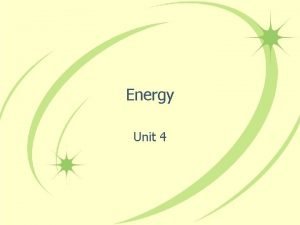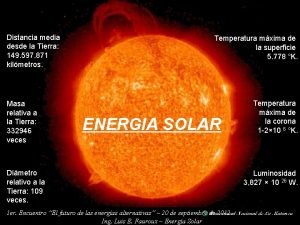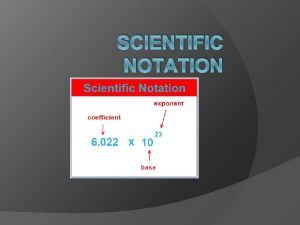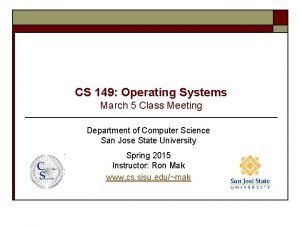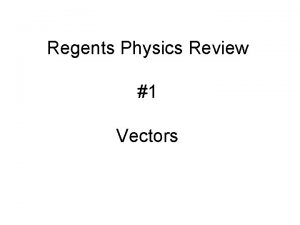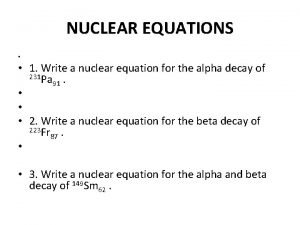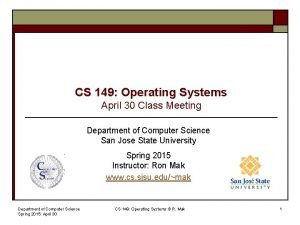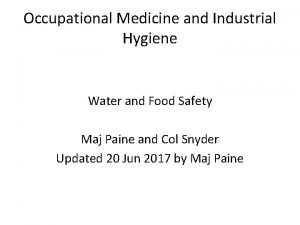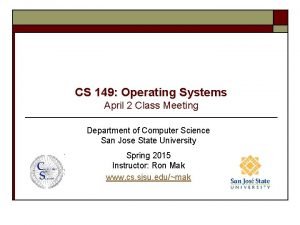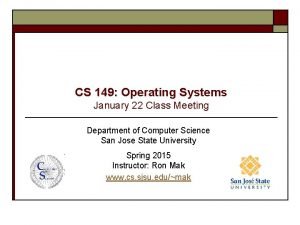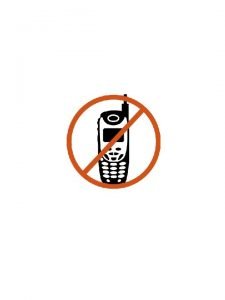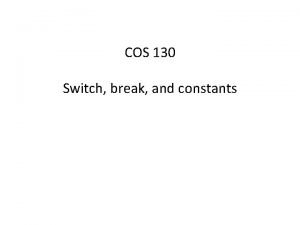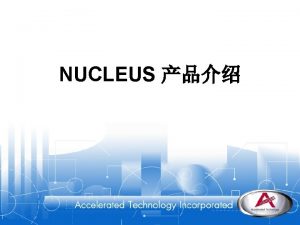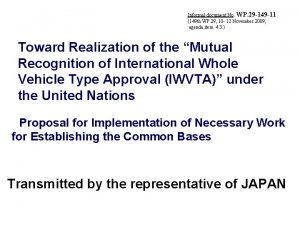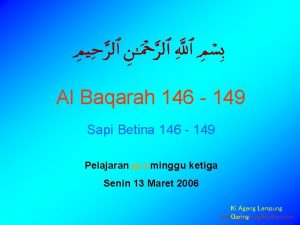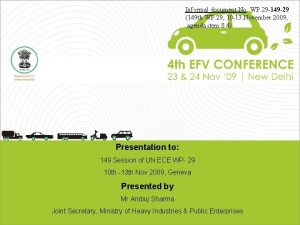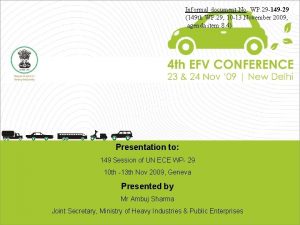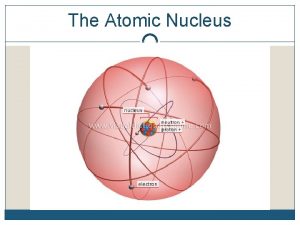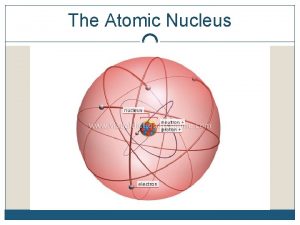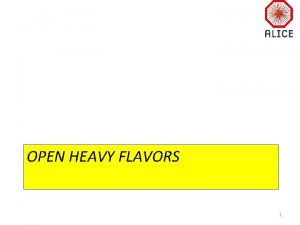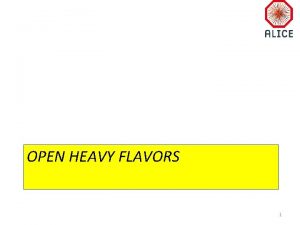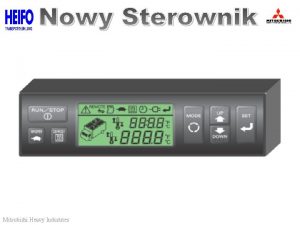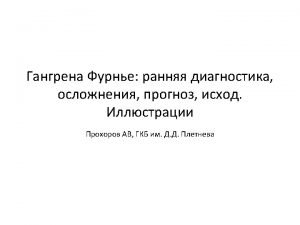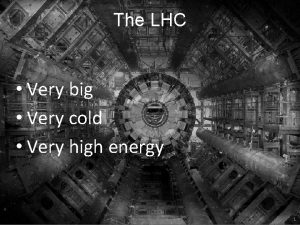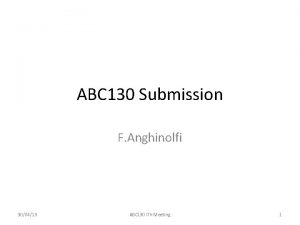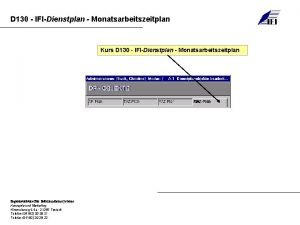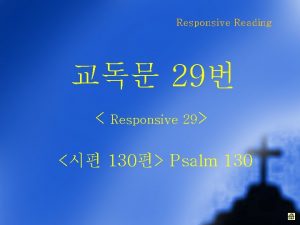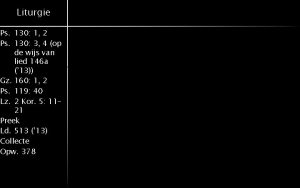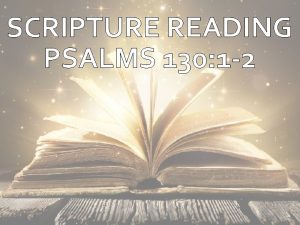Very Heavy Nucleus 130 149 u Light Nucleus




























- Slides: 28


Very Heavy Nucleus 130 -149 u Light Nucleus 85 -104 u Other Particles BACK HOME NEXT

La n U 235 Mo BACK HOME NEXT

Light Nuclei BACK 3 Heavier Nucleus HOME NEXT

Two heavy hydrogen nuclei, deuterons, combine to form a nucleus of helium d BACK + 3 d He HOME + NEXT nn

Now we will see an animation of a nuclear fission reaction. We will see how a neutron cause fission of Uranium nucleus. We will also see controlled and uncontrolled chain reactions









Nuclear Energy, energy released during the splitting or fusing of atomic nuclei. The quantities of energy that can be obtained from the nucleus far exceed those that can be obtained from chemical processes, which involve only the outer regions of the atom. BACK HOME NEXT

Nuclear energy can be released in two different ways: by fission (splitting) of a heavy nucleus, or by fusion (combining) of two light nuclei. BACK HOME NEXT

In both cases energy is released because the products have a higher binding energy than the reactants. Fusion reactions are difficult to maintain because the nuclei repel each other, but, unlike fission reactions, fusion reactions create far less radioactivity. BACK HOME NEXT

Nuclear energy, measured in millions of electronvolts (Me. V), is released by the fusion of two light nuclei, as when two heavy hydrogen nuclei, deuterons (ªH), combine in the reaction producing a helium-3 nucleus, a free neutron (¦n), and 3. 2 Me. V, or 5. 1 × 10 -13 J. BACK HOME NEXT

Nuclear energy is also released when the fission of a heavy nucleus such as ¯U is induced by the absorption of a neutron, as in BACK HOME NEXT

producing caesium-140, rubidium-93, three neutrons, and 200 Me. V, or 3. 2 × 10 -11 J. A nuclear fission reaction releases 10 million times as much energy as is released in a typical chemical reaction. BACK HOME NEXT

Now you will see how a controlled chain reaction is used in a Nuclear Reactor to produce electricity.






Nuclear Energy, " Microsoft® Encarta® Encyclopedia 2000. © 1993 -1999 Microsoft Corporation. All rights reserved.

 Shratey calculator
Shratey calculator In a wild shot bo flings a pool ball of mass m
In a wild shot bo flings a pool ball of mass m Light light light chapter 23
Light light light chapter 23 Light light light chapter 22
Light light light chapter 22 Chapter 22
Chapter 22 A little food or a few food
A little food or a few food Multiplication of scientific notation
Multiplication of scientific notation Very little or very few
Very little or very few Receiving table/area
Receiving table/area Figure 10
Figure 10 149 597 871
149 597 871 289 in scientific notation
289 in scientific notation Cs 149 sjsu
Cs 149 sjsu The diagram below represents a 155 newton box on a ramp
The diagram below represents a 155 newton box on a ramp Alpha decay of 150gd64
Alpha decay of 150gd64 149 da harpa
149 da harpa Cs 149
Cs 149 Troop 149
Troop 149 Afman 48-149
Afman 48-149 Cs 149 sjsu
Cs 149 sjsu Sjsu cs 149
Sjsu cs 149 Operant vs classical
Operant vs classical Bowling ball vs ping pong ball
Bowling ball vs ping pong ball First aid aims
First aid aims Bacteria double membrane
Bacteria double membrane Bouncing off of light
Bouncing off of light Block light in science
Block light in science Put out the light othello
Put out the light othello Cos 130
Cos 130

